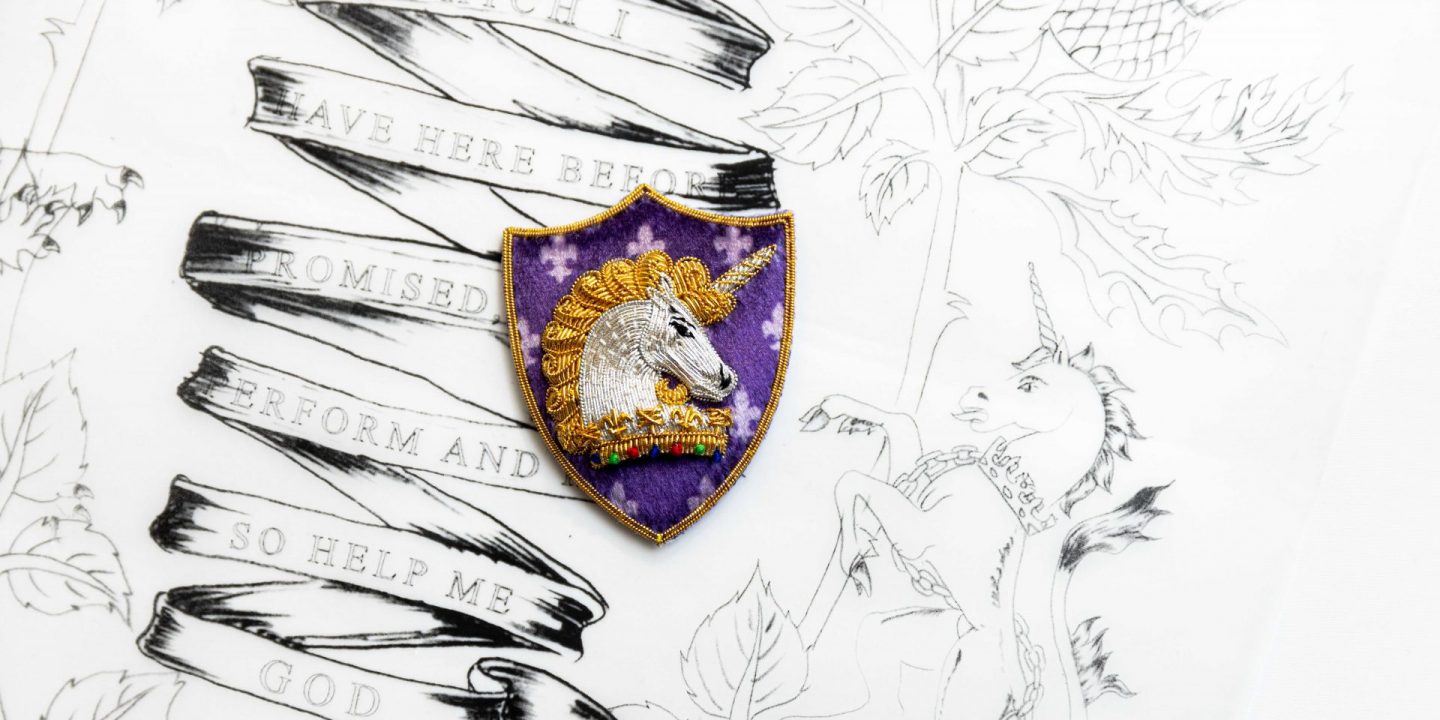

2022 is the year Great Britain and the Commonwealth celebrate 70 years since Her Majesty The Queen Elizabeth II became the reigning monarch. Officially described as her Platinum Jubilee the event is a milestone no other British King or Queen has ever yet achieved. Considering other European Royalty, only Louis XIV of France has had a longer reign than Queen Elizabeth, clocking up 72 years and 110 days. A milestone the Queen could still yet surpass.
Over the decades, the nation has gleefully celebrated all the major landmarks such as the Silver, Ruby, Gold, Diamond, Sapphire and now the Platinum Jubilees to mark the commitment and lifelong dedication of the Queen. In 70 years of public service, the Queen has undertaken over 250 official overseas visits, sat for over 120 portraits, attended more than 30 Royal Variety performances and given over 90 State banquets.
With all these public appearances the Queen has come to be the physical embodiment and symbol of Great Britain. The Queen in the 20th and 21st centuries is an icon of Britishness and a familiar symbolic figurehead. Like Queen Victoria, and how she was represented during the peak years of the British Empire, the nation and the world should be able to see themselves in the monarchy.
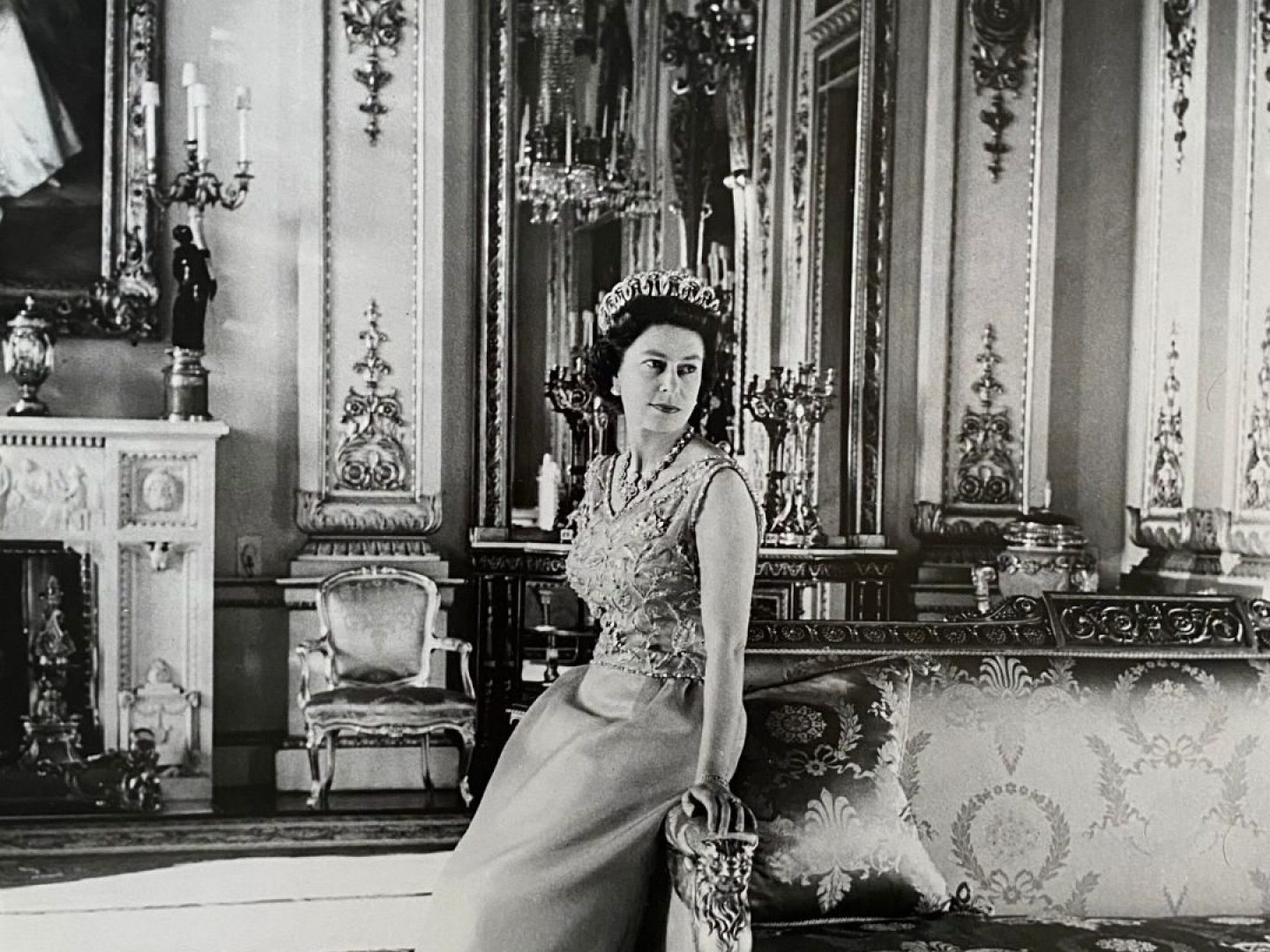
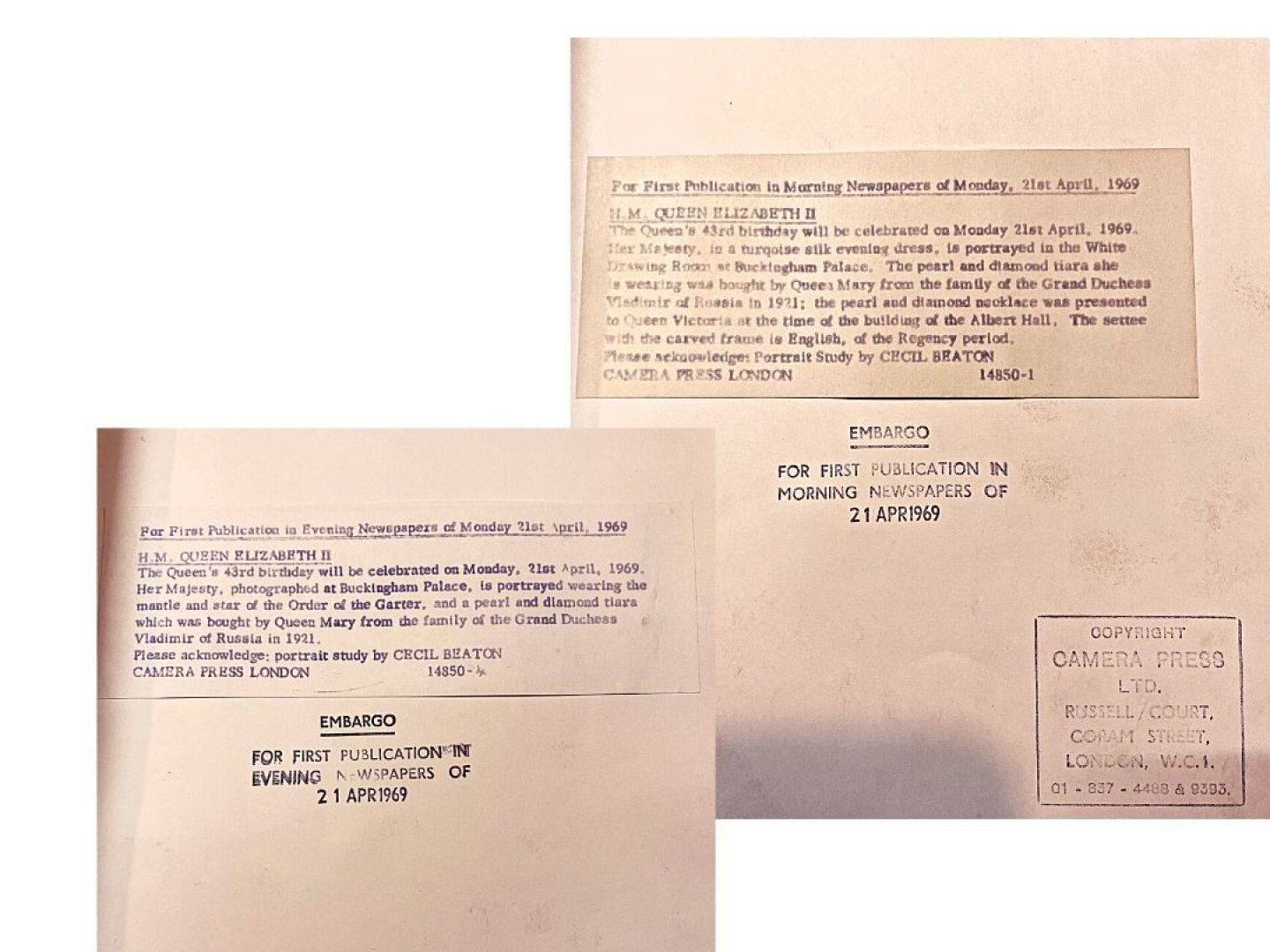
Each event and appearance is an opportunity for the Queen to meet, greet and be seen by the public. She has embraced brightly coloured crisp and clean outfits which, according to the Countess of Wessex, allow her, “…to stand out for people to be able to say ‘I saw the Queen’”. While this is true today, The Queen has worn different styles over the years. In this article, we trace her style evolution from the glamour of the1950s through to the coordinated eye-catching ensembles of today. Along the way, we can better understand how the monarch’s style must serve to make her instantly visible while being modest and in keeping with the era and her changing role in Britain’s Constitutional Monarchy.
As a Princess, Elizabeth’s public style and persona had been shaped by the photographic portraits made by Cecil Beaton, who favoured a dreamy Arcadian aesthetic. Often surrounded by flowers and wearing embroidered floral dresses, she was the embodiment of serenity and peace in her contrived pastoral settings. Wearing delicately embroidered gowns designed by Sir Norman Hartnell she projected youth, vitality and femininity. While this delicate style suited the role of Princess, it wouldn’t be appropriate for a Queen.
After the sudden and premature death of her father in February 1952, Elizabeth made the transition from Princess to Queen and plans were put into motion for her grand coronation. In October 1952
Hartnell was commissioned to design and create a gown for the official ceremony the following June. Hartnell presented nine designs to the Queen with each preliminary draft serving to help shape their final vision. In his autobiography, he described how the Queen insisted that Great Britain and all the dominions of the Commonwealth should be represented. Hartnell incorporated the emblems of England, Scotland, Ireland and Wales and the combined flowers of the Commonwealth countries. The final gown succeeded in being regal, traditional and mediaeval while also being mature, symbolic and inclusive. The heavily embroidery voluminous and dramatic gown signalled the arrival of a Queen who would faithfully preside over, and represent all her subjects.

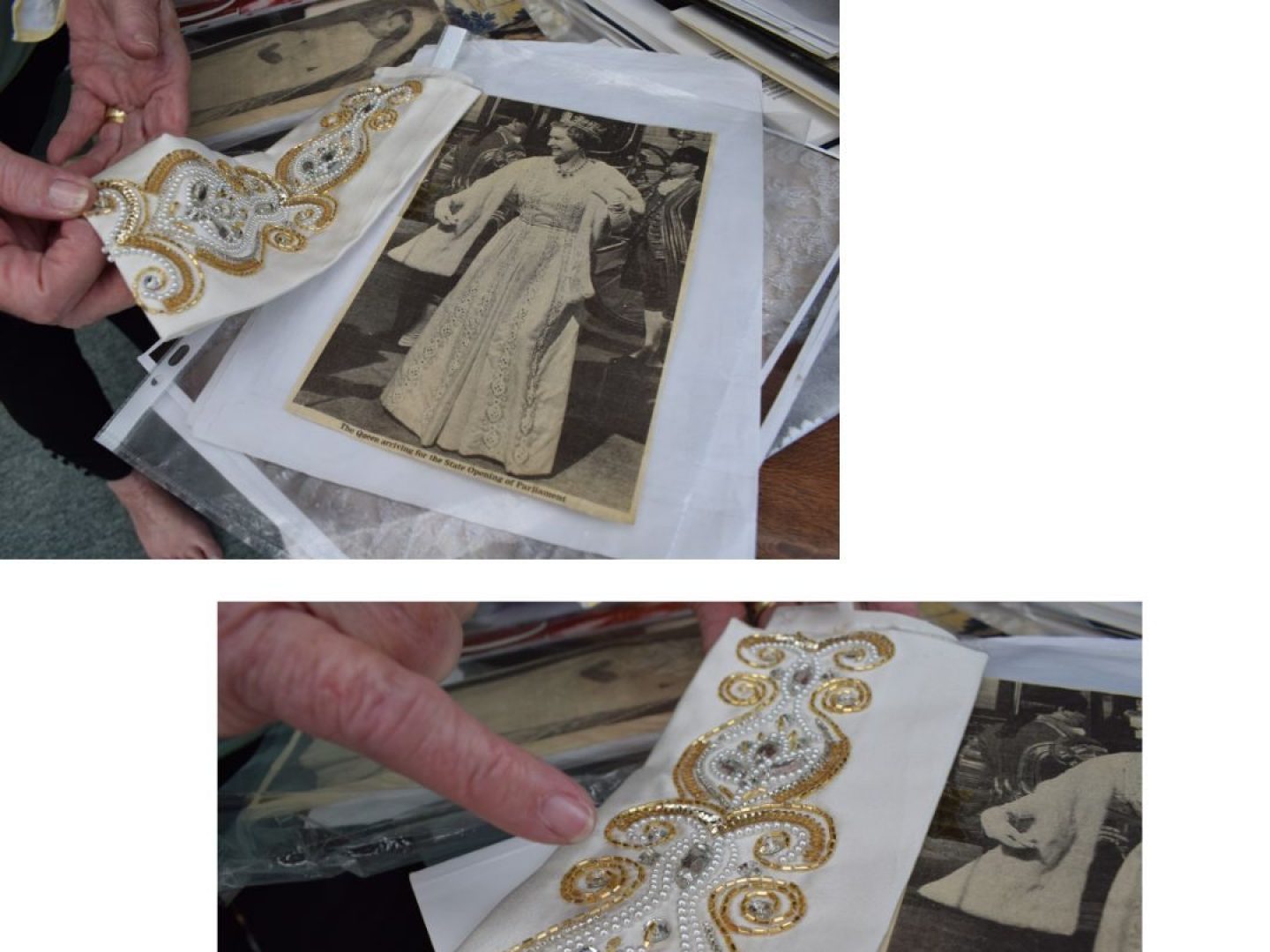
In high fashion, the 1950s was a decade of heavily embellished gowns in the style of the “New Look” Christian Dior silhouette. At that time the likes of Hartnell and Dior both routinely sought the specialist embroidery services of London embroidery designer Stanley Lock. The former WW2 Naval officer had become a sought after embroidery draughtsman at C E Phipps & Co before taking over the company and renaming it S. Lock Ltd in 1956. His embroidery designs featured on gowns worn by Hollywood royalty Marilyn Monroe, Jane Russell and Paulette Goddard as well as real Royalty.
During this period the Queen worked with Hartnell to create many of the full-skirted glamorous evening dresses she wore on her 1957 American tour. These had to be made according to her exacting needs, and petite 23-inch (58cm) waist. Typically, months in advance of any important engagements, the Queen would receive her dressmakers to look over sketches. Just as with her Coronation gown, she would then offer feedback and suggestions before the dressmakers brought the visions to life.
As she grew more confident, Queen found her unique way to navigate the grandeur of European aristocracy, the drama and glamour of Hollywood and the new cleaner lines that would come to dominate fashion in the 1960s. Since her 1950 tour of Canada as a Princess, she had also employed the services of Savile Row tailor Hardy Amies who over the decades, would help establish the monarch’s enduring understated style. Keen to show the Queen took an active role in her styling, Amies once famously quipped: “I do not dress the Queen. The Queen dresses herself.”
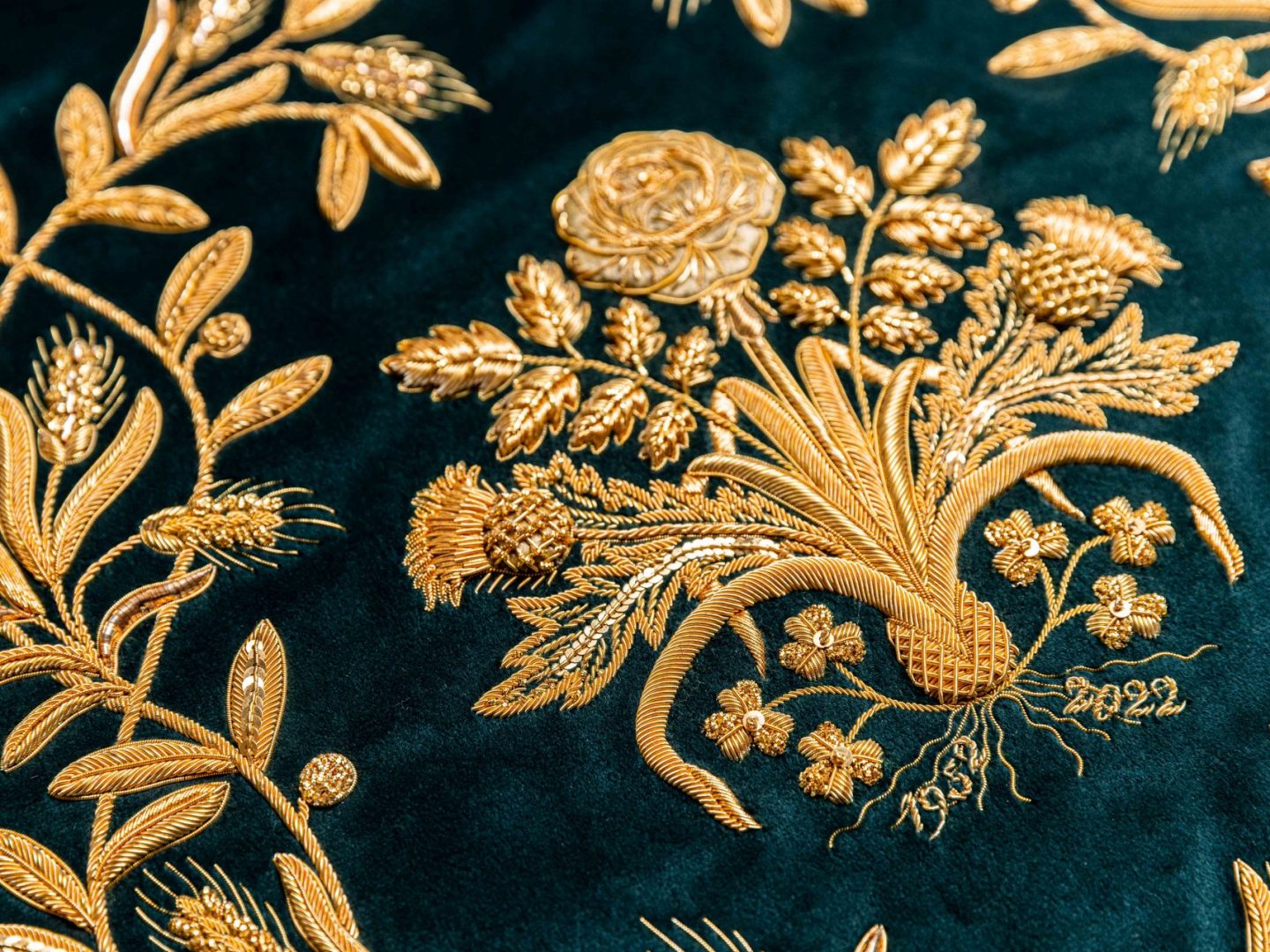
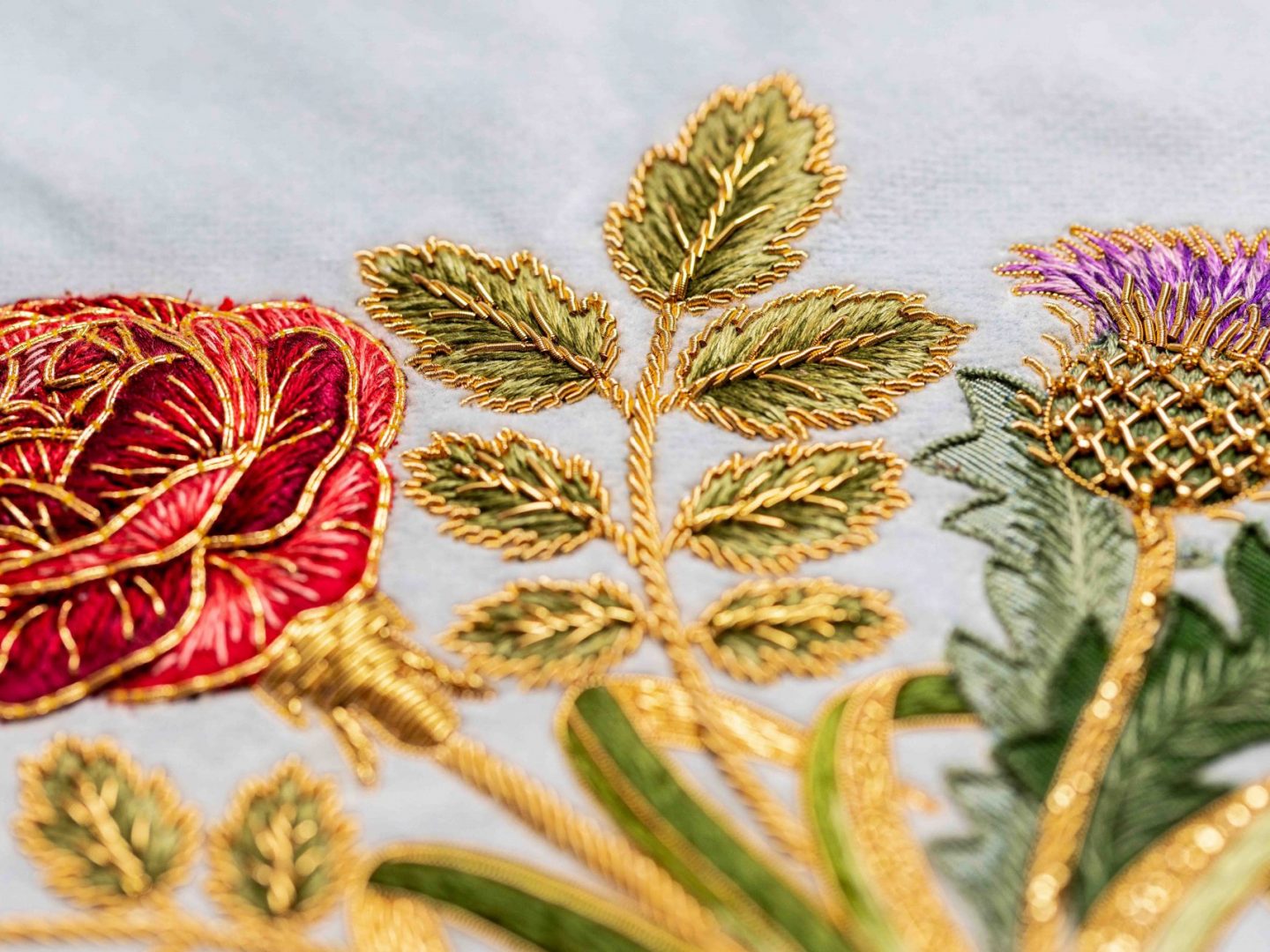
The Queen, with the help of Amies, began to move away from the dramatic Dior silhouette. Many of the straight skirted gowns with embroidered bodices of this period reflected a more relaxed and easy Monarch. This new ease was best captured in another Cecil Beaton portrait taken in the White Drawing Room at Buckingham Palace in 1968. By this time, 15 years into her reign, the Queen’s demeanour, style and silhouette were casual by Royal standards. The turquoise silk shift dress with silver floral embroidery by S. Lock Ltd had been designed by Amies to celebrate the Queen’s 43rd birthday.
For ongoing services to the Queen through the exquisite embroideries on the designs of both Norman Hartnell and Hardy Amies, S. Lock Ltd would receive the royal warrant in 1972.
The same year the Queen attended the Palace of Versailles in France wearing a full-length gown with an embroidered bodice designed by Hartnell. Delighted with the gown Amies felt compelled to write to Stanley Lock and his head embroiderer Peggy Umpleby describing the scene: ‘I was lucky enough to be standing with Marc Bolan of Dior, Cardin himself and Guy Laroche in the Galerie des Glaces when [The Queen] passed through and she truly looked splendid and quite outshone Mme Pompidou.” When the fashions grew more extreme, particularly during the 70s, the Queen always remained removed from fleeting trends sustaining a style very much of her own making.
In the late 60s through the 70s and into the 80s The Queen’s silhouette remained much the same with the introduction of the occasional pleated skirt, highland tartans or bold floral patterns. For summer dresses the hemlines ascended to just below the knee and the Queen would occasionally sport trousers and tweed jackets for private horsing events. From the late 70s, the Queen began wearing coordinated bold colours or patterns when meeting and greeting the public. In place of embroidery, the Queen would typically wear a brooch that often offered some symbolic meaning. For evening engagements, she continued to favour the embroidered gowns of Amies but would opt for more demure tone on tone embroidery.
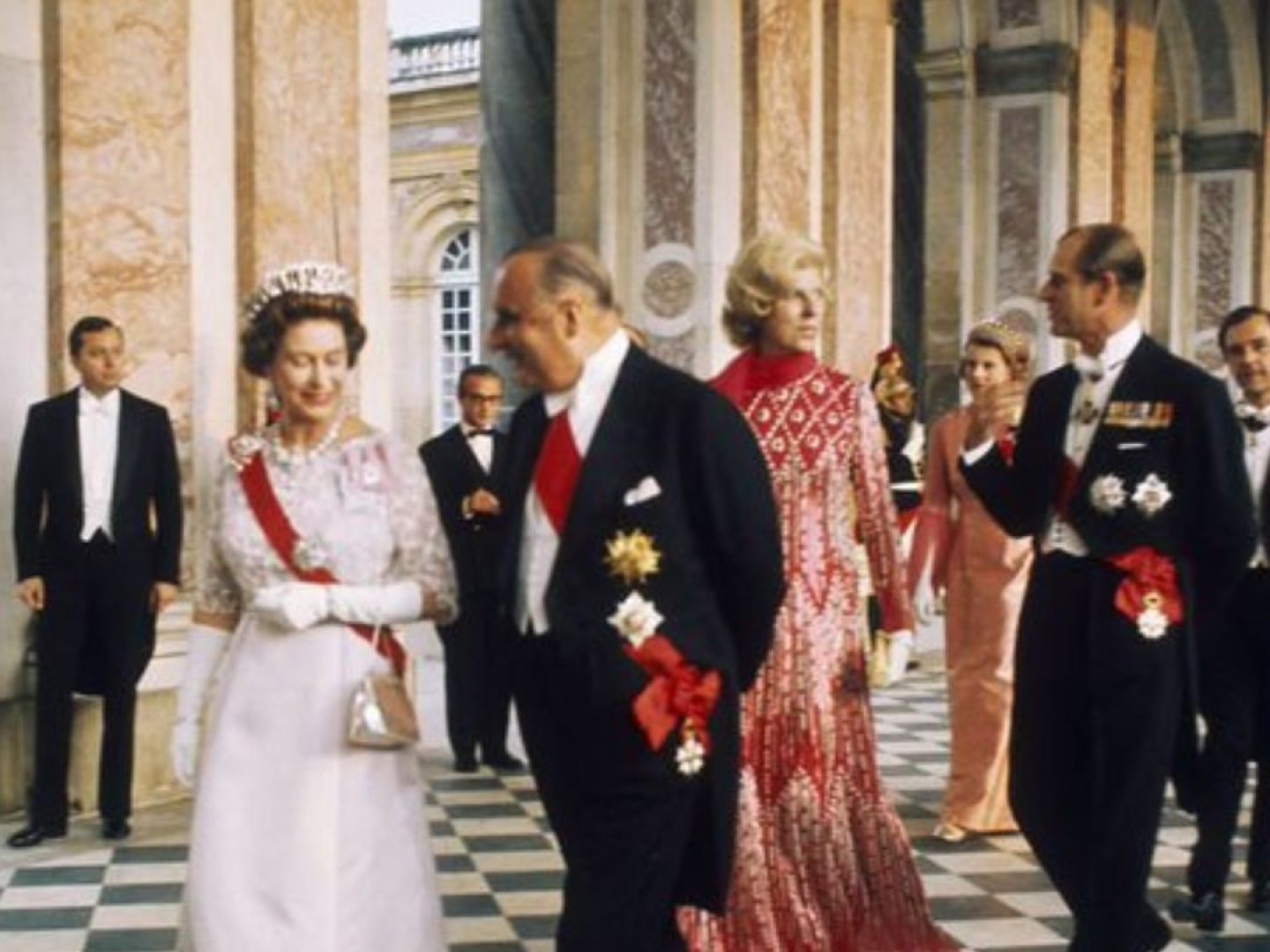
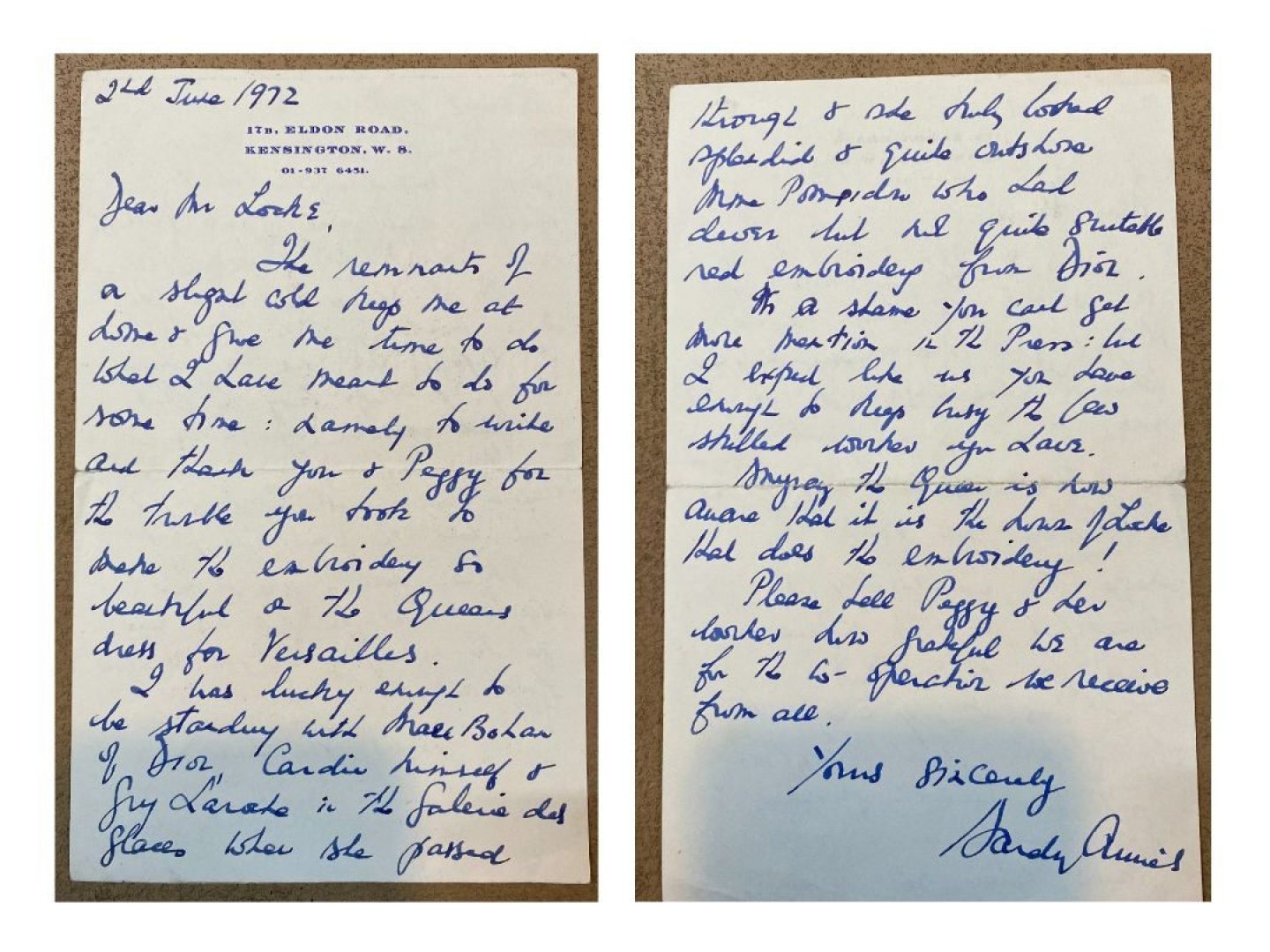
"The remnants of a slight cold keeps me at home and hand the time to do what I have meant to do for some time: namely to write and thank you and Peggy for the trouble you took to make the embroidery so beautiful for the Queens dress for Versailles."


One of Amies gowns designed in 1986, captures the understated elegance and her tacit recognition of 80s fashions. For the Royal Albert Hall concert to celebrate Her Majesty’s 60th birthday the Queen wore a turquoise dress with silver embroidery on the bodice and sleeves. In keeping with the era, the lightweight whimsical dress had delicately pleated chiffon that opened up to reveal more spiralling silver embroidery close to the hem of the gown. On the red carpet, the Queen was photographed enveloped in a white fur stole and white gloves revisiting the Hollywood glamour of the 1950s.
By the late 90s, the Queen settled into her now trademark matching overcoats and hats. Simple outfits that served to be comfortable and understated.
Since the death of the Queen’s lifelong servant, confident and dresser ′′Bobo′′ MacDonald, these looks have been chosen with careful consideration by the Queen’s new senior dresser Angela Kelly. Since 1994 Kelly has been tasked with researching the venues for upcoming Royal visits and considering the symbolism and significance of different colours to create appropriate outfits for the monarch. Unlike other senior dresser’s Kelly also worked closely with designers and even designed pieces herself. Most notably she created the buttery yellow ensemble worn by the Queen to the wedding of Prince William and Kate Middleton in 2011. The choice of this delicate shade of yellow reflects hope and positivity while her choice of jewellery, Queen Mary’s True Lovers Knot diamond brooch, speaks for itself.
The choice of this delicate shade of yellow reflects hope and positivity while her choice of jewellery, Queen Mary’s True Lovers Knot diamond brooch, speaks for itself.
For more than 70 years the Queen has made sartorial choices that have helped shape our modern idea of a monarch. When spectacle is called for, the gowns have echoed history and the ages and when seeking to dazzle during a world tour the Queen has adopted her own brand of Hollywood glamour. She has turned to British designers to ensure she remains sophisticated yet eye-catching and has served to inject function and pragmatism into her event wardrobe. In 2022 for her Platinum Jubilee celebrations the Queen will undoubtedly dazzle the world and make her feelings known through her clothing choices.
